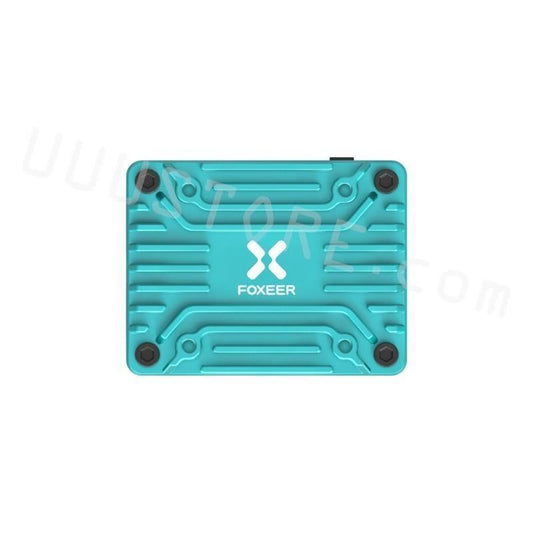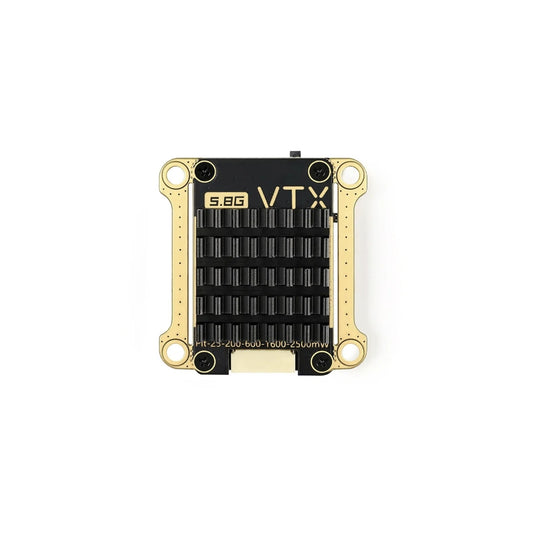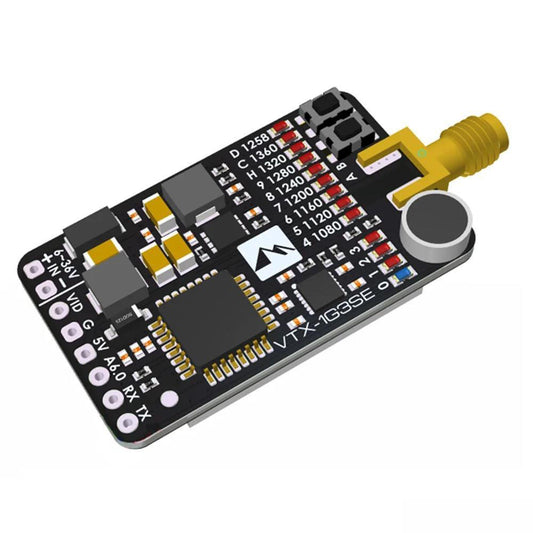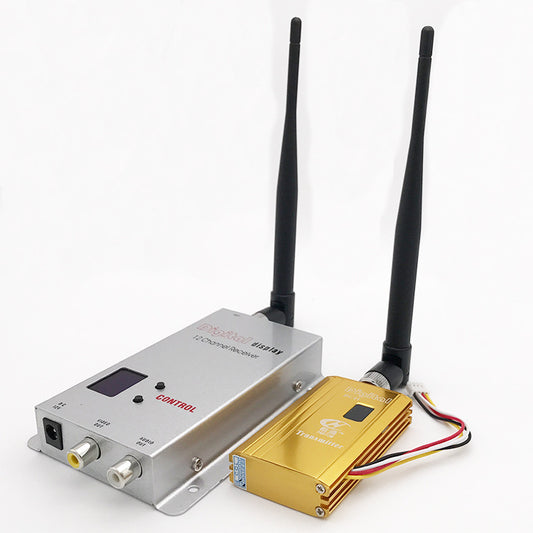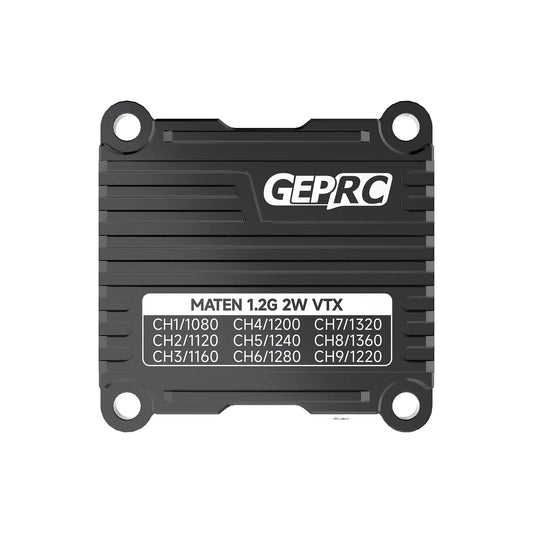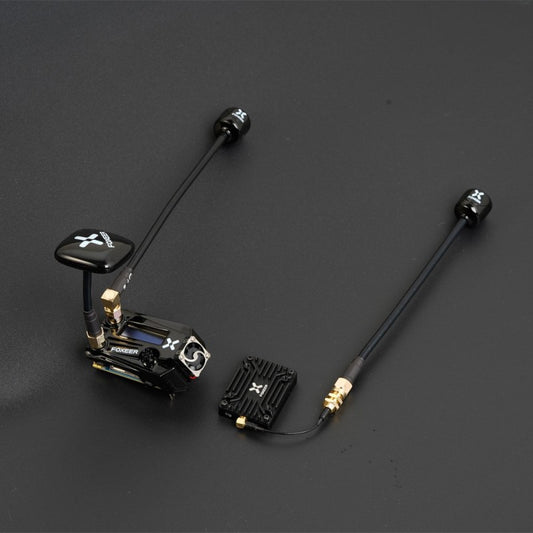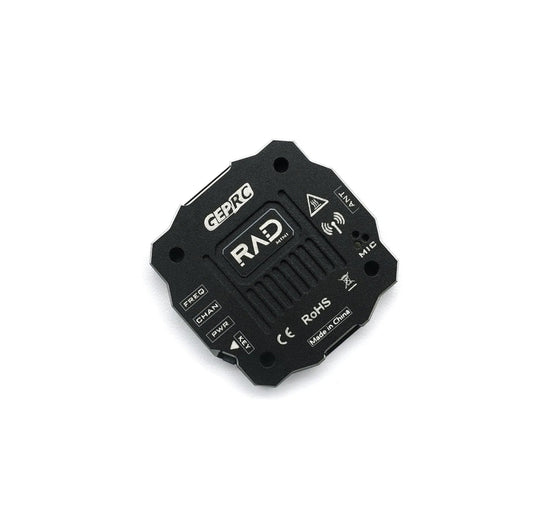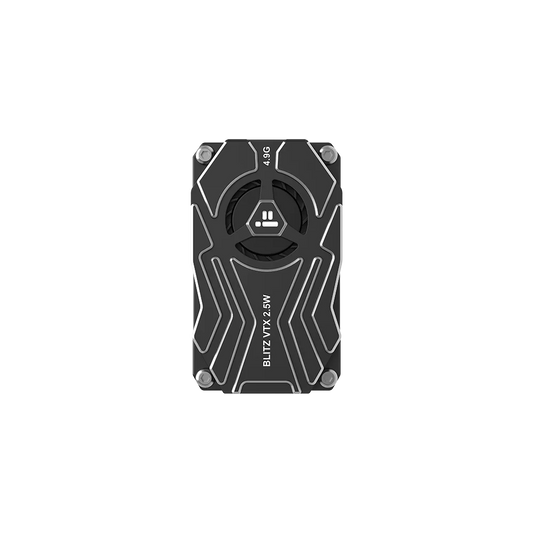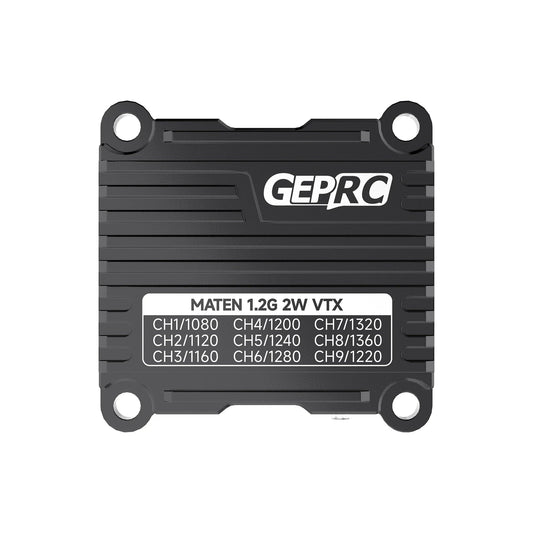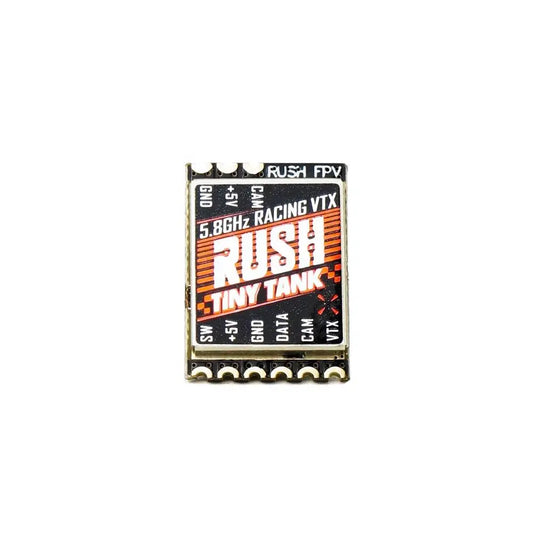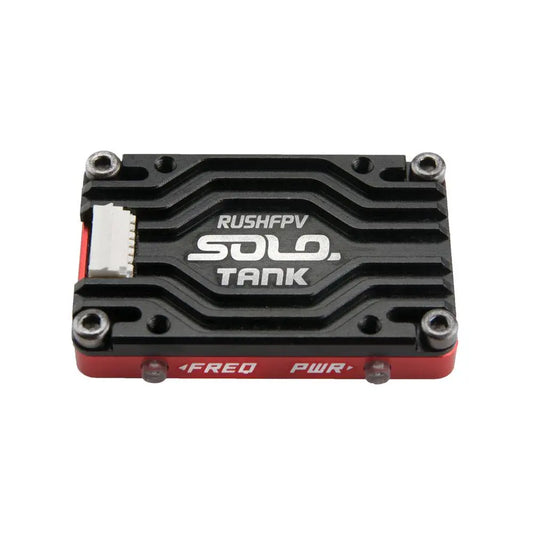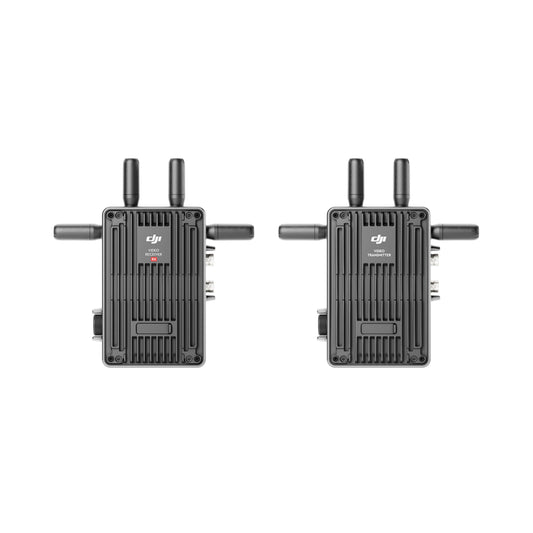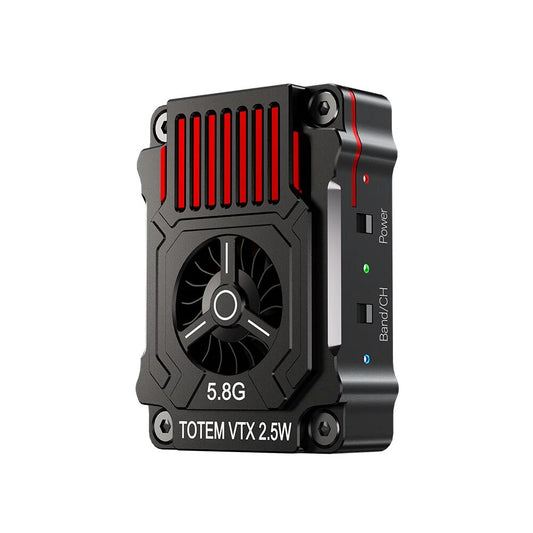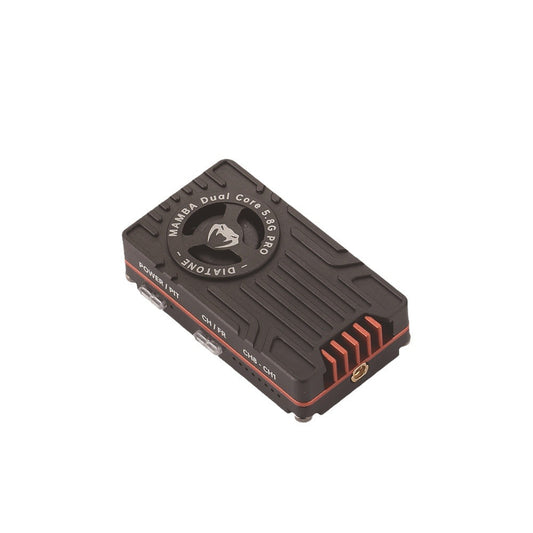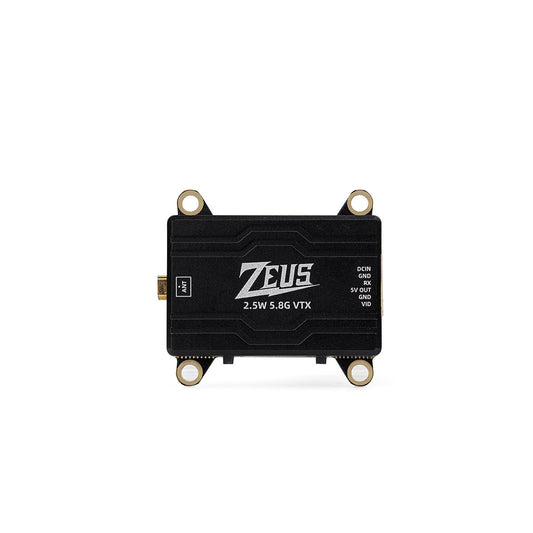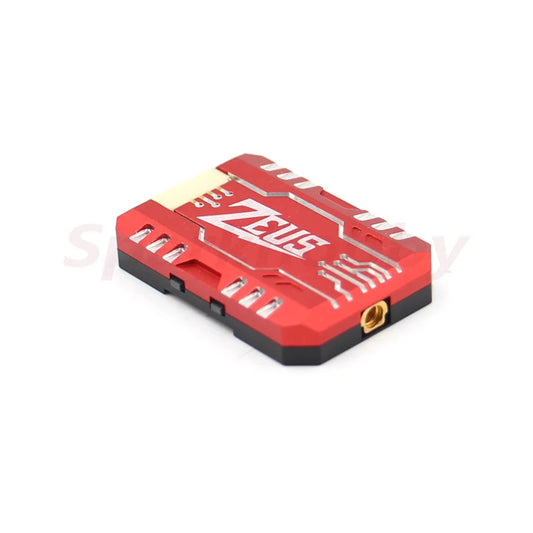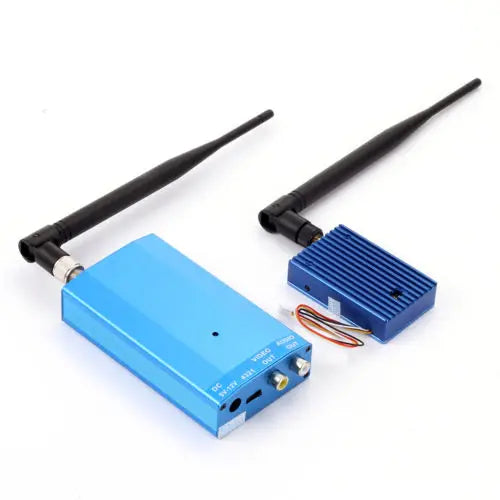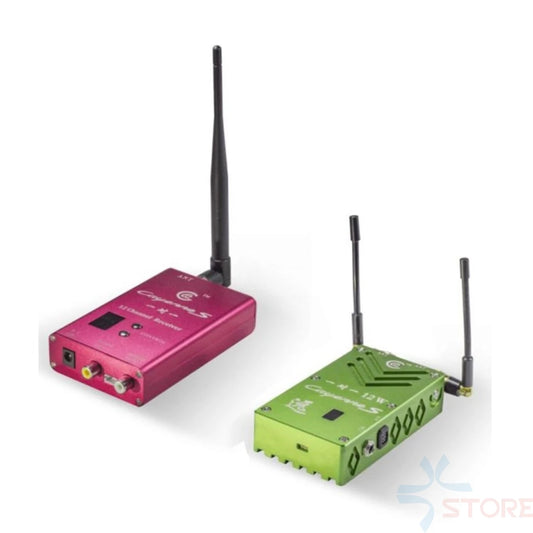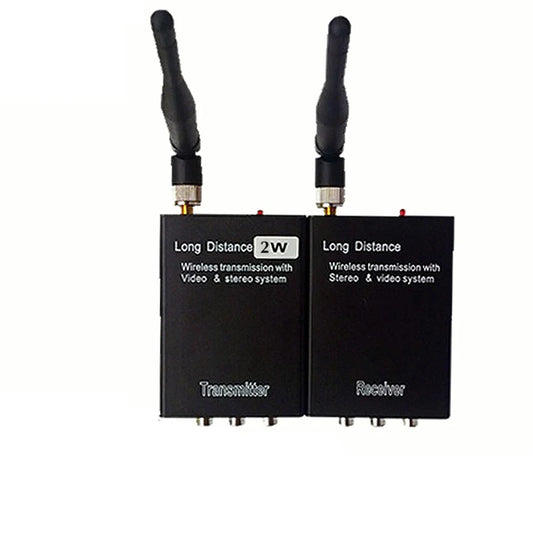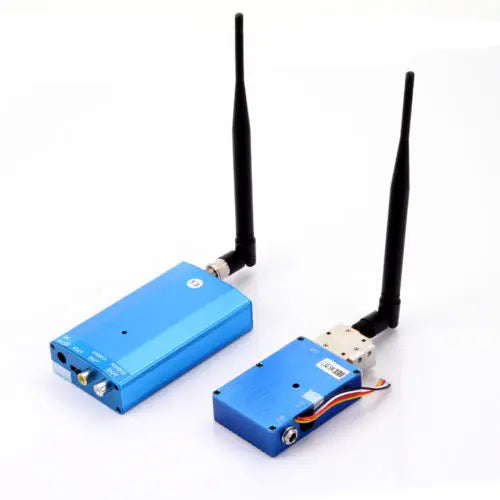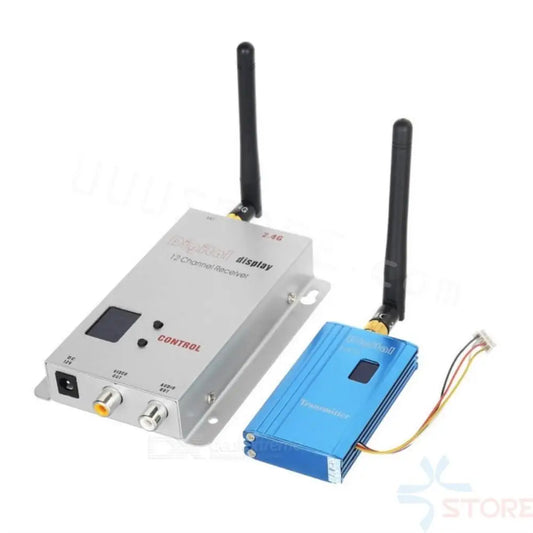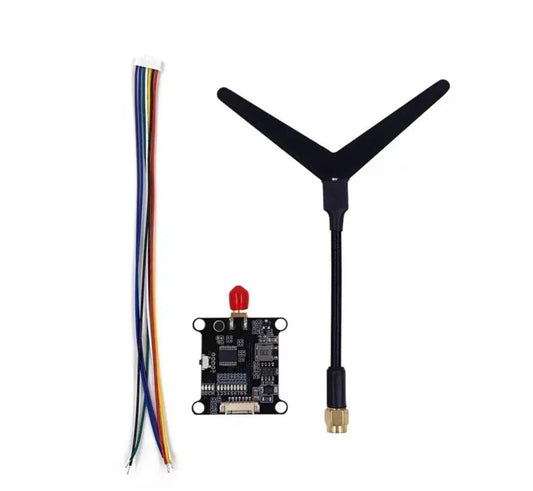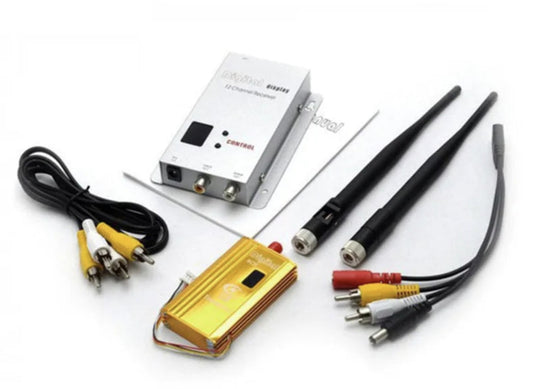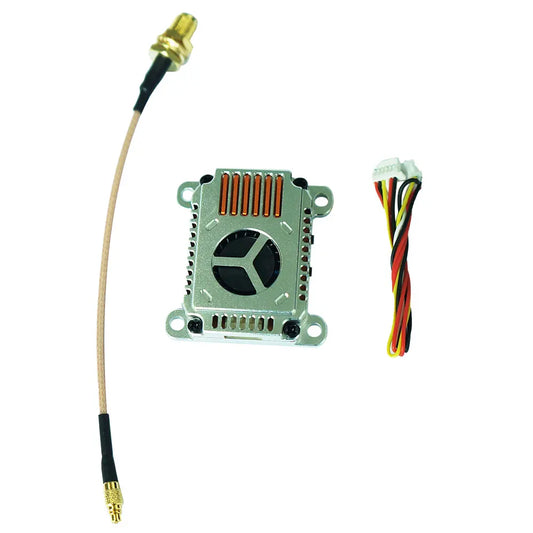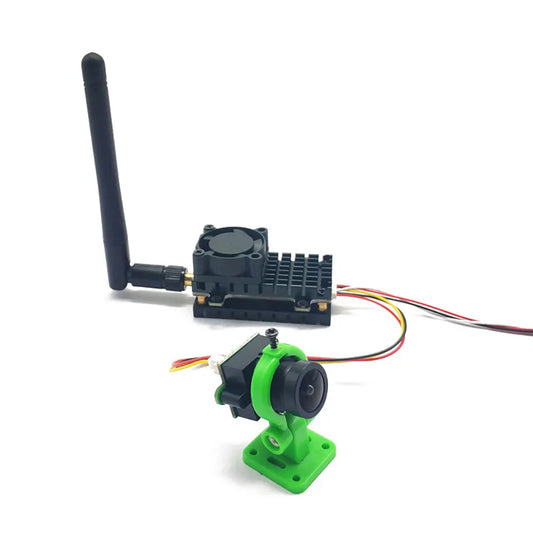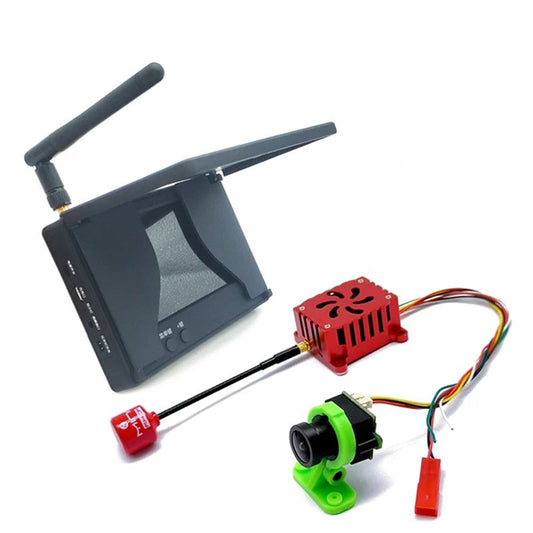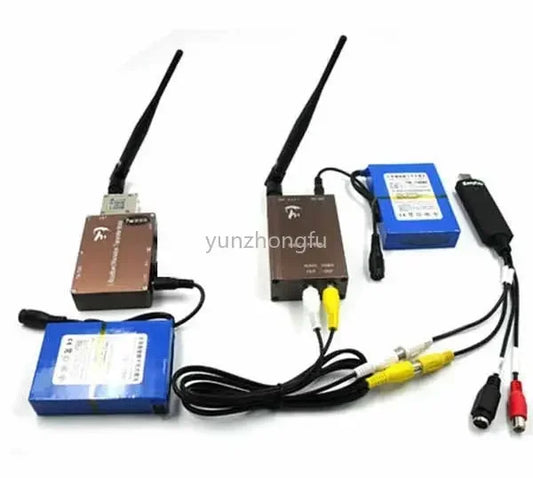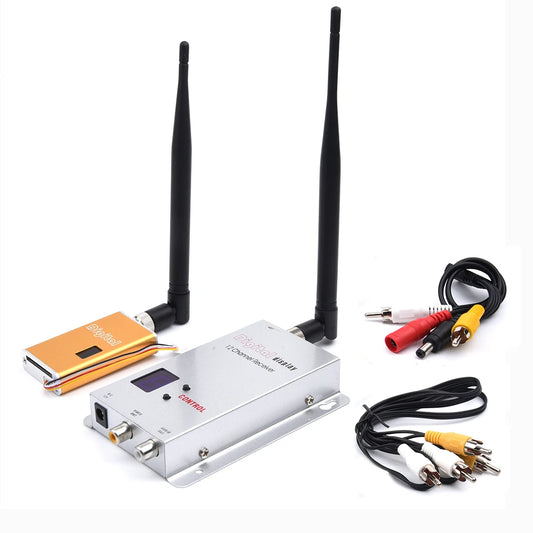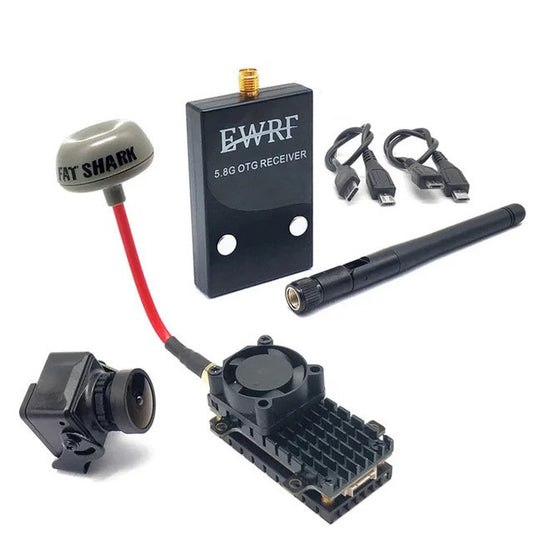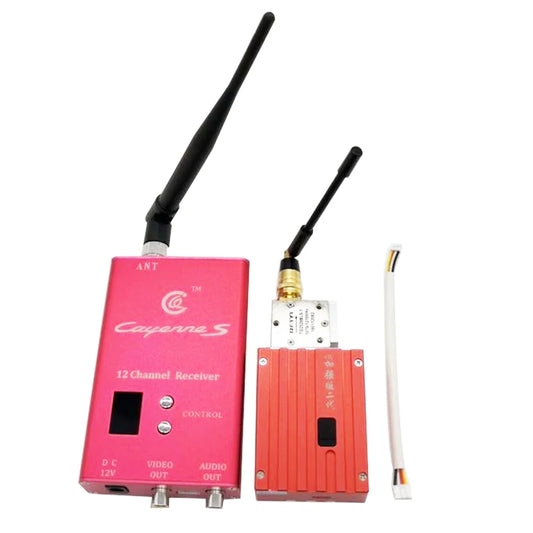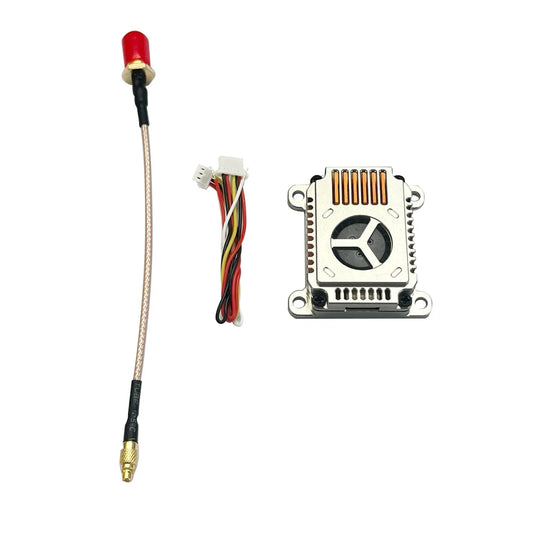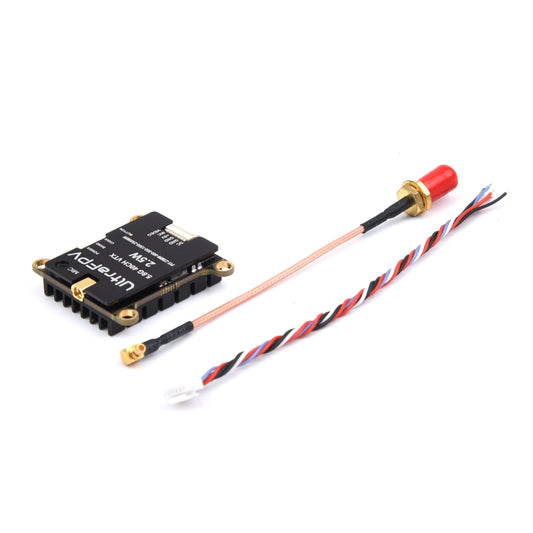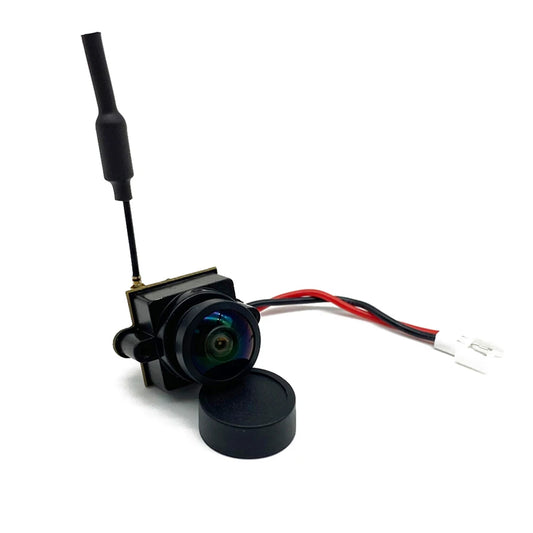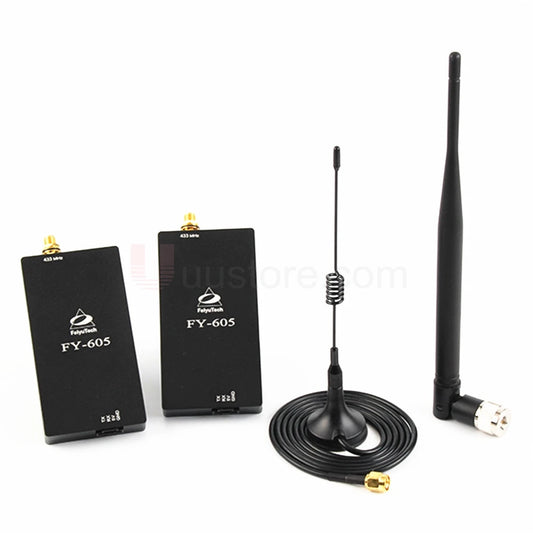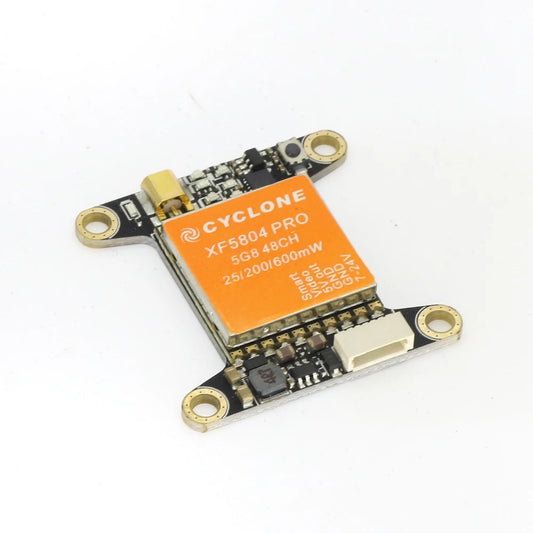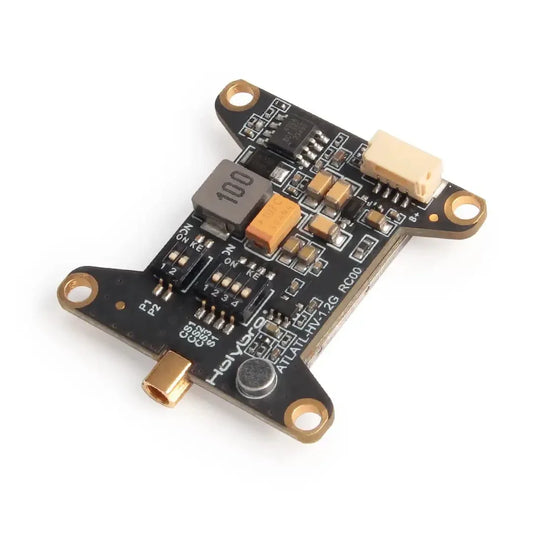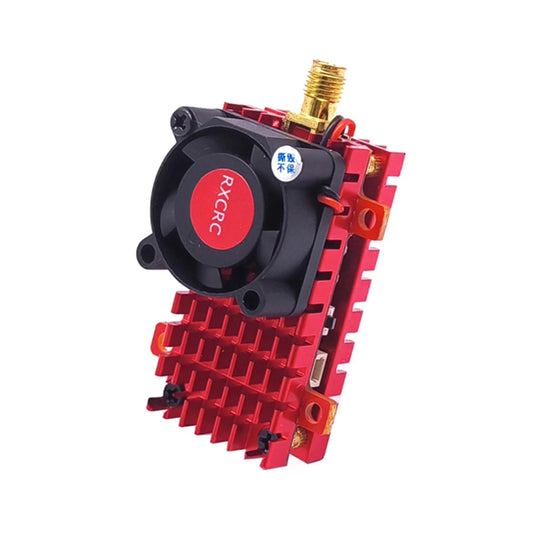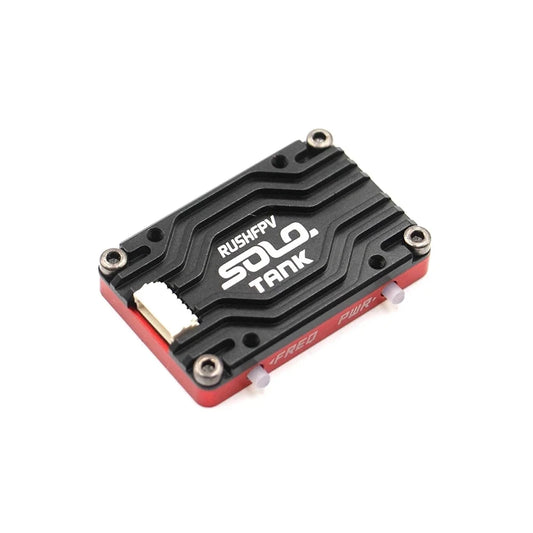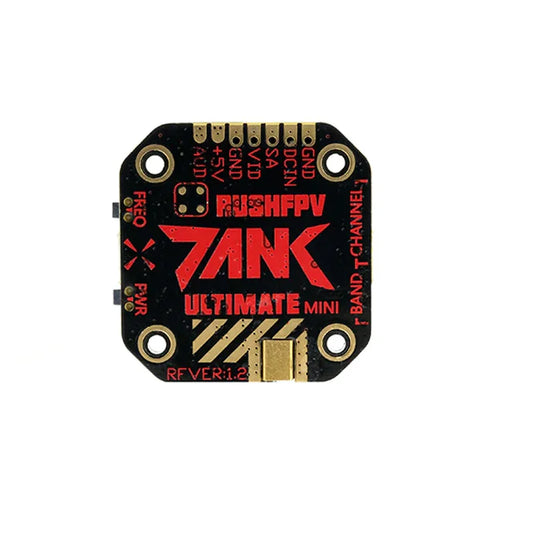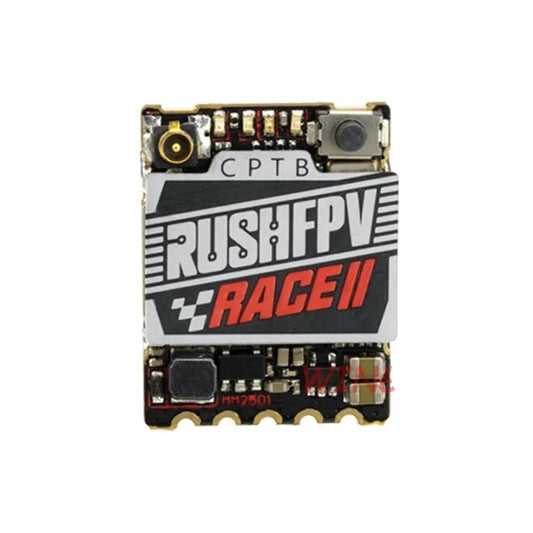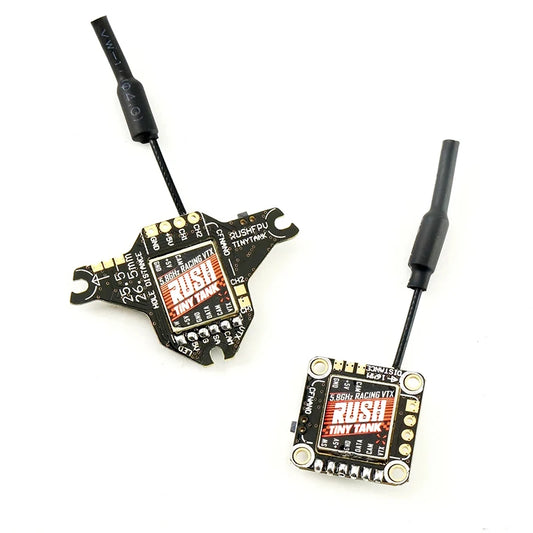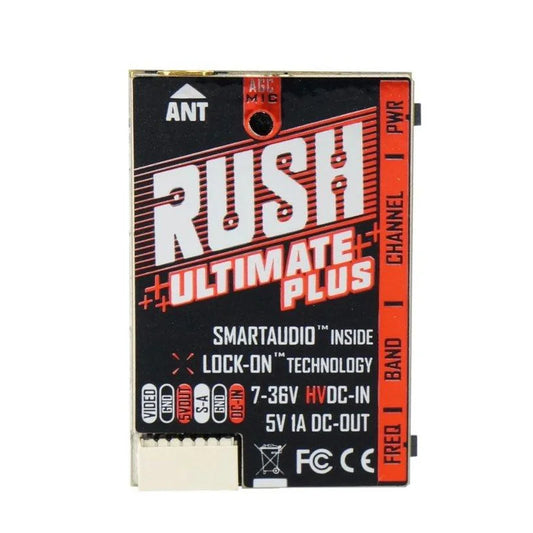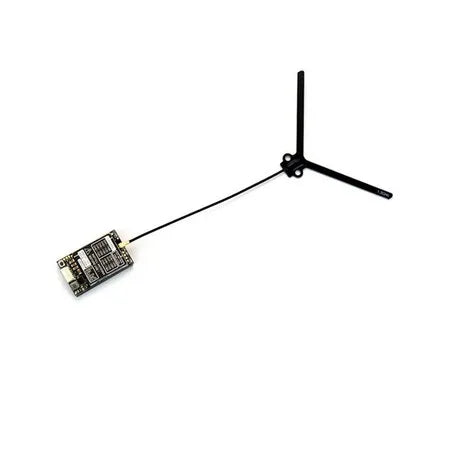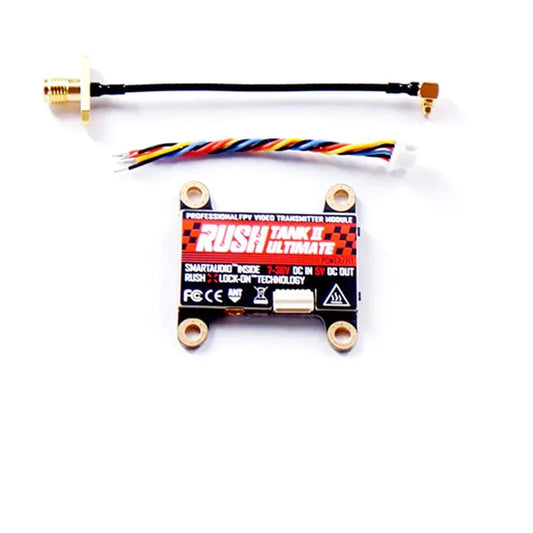-
Foxeer Reaper Extreme Transmitter - 5.8GHz Pit/25mW/200mW/500mW/1.5W/2.5W 2500mW 40CH VTX FPV Transmitter For Long Rang RC Drone Airplane
Regular price $81.93 USDRegular priceUnit price per$122.89 USDSale price $81.93 USDSale -
GEPRC RAD VTX - 5.8G 2.5W PitMode 2500mW Output Long Range Transmitter Tramp Support Microphone RC FPV Racing Drone
Regular price $60.85 USDRegular priceUnit price per$79.10 USDSale price $60.85 USDSale -
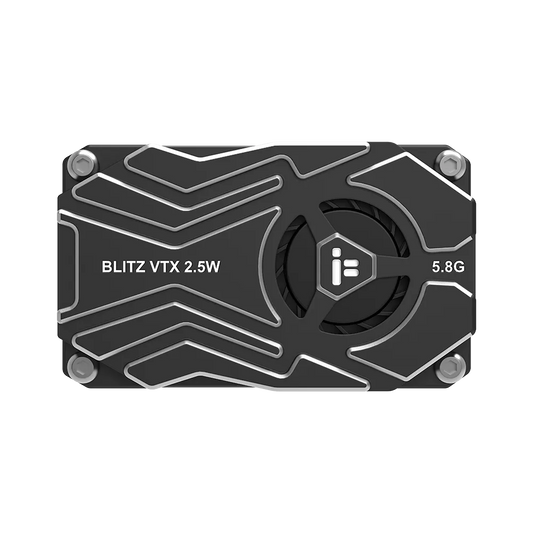
iFlight BLITZ Whoop 5.8G 2.5W VTX - with MMCX Interface 25.5x25.5mm Mounting pattern for FPV Parts
Regular price $72.85 USDRegular priceUnit price per$94.70 USDSale price $72.85 USDSale -
Matek System VTX-1G3SE-9 Transmitter - 1.2G/1.3GHz 9CH INTL 0.1mW/25mW/200mW/800mW FPV Transmitter For racing drone Goggles instead VTX-1G3-9
Regular price $72.48 USDSale price $72.48 USDUnit price perSold out -
1.2G 1.5W 8CH VTX / 12CH VRX - 1.2GHZ 1500mW 8Channel Wireless FPV Tranmsitter and 12 Channel Receiver Professional Kit for CCCTV DJI Phantom
Regular price From $53.57 USDRegular priceUnit price per$74.87 USDSale price From $53.57 USDSale -
GEPRC MATEN 1.2G 2W VTX - 1080-1360MHZ/25-2000mW Pit 5V@600mA 14.5g For FPV Drone
Regular price From $8.11 USDRegular priceUnit price per$12.17 USDSale price From $8.11 USDSale -
Foxeer 4.9G Low band Goggles Module Set - Foxeer 4.9G Wildfire Dual Receiver, Reaper 2.5W Extreme VTx with 40CH, Lollipop/Echo 2 Patch Antenna
Regular price $299.00 USDRegular priceUnit price per -
GEPRC RAD MINI 5.8G 1W VTX
Regular price $48.68 USDRegular priceUnit price per$63.29 USDSale price $48.68 USDSale -
iFlight BLITZ Whoop 4.9G 2.5W VTX with MMCX Interface for FPV Parts
Regular price $73.46 USDRegular priceUnit price per$95.49 USDSale price $73.46 USDSale -
GEPRC MATEN 1.2G 2W VTX - 25mW/2000mW VTX Transmitter Transmitting Module 1080 Mhz -1360 Mhz for FPV Long Range Racing Drone
Regular price From $9.12 USDRegular priceUnit price per$13.68 USDSale price From $9.12 USDSale -
Rush Tiny Tank 5.8GHz 37CH 350mW VTX - 5V PIT/25/100/200/350mW TBS Smart Audio UFL FPV Video Transmitter
Regular price $24.99 USDRegular priceUnit price per -
RushFPV Rush Tank SOLO 1W 5.8GHz VTX - 5V 1A 48CH PIT/25/400/600/800/1000mW FPV Video Transmitter
Regular price $49.99 USDRegular priceUnit price per -
DJI Transmission - 20,000ft 1080p/60fps Wireless Video Transmission with Video Transmitter and Video Receiver VTX VRX (Standard / High-Bright Monitor Combo)
Regular price From $1,199.00 USDRegular priceUnit price per -
TOTEM 5.8G 2.5W 48CH VTX - 25mW/400mW/800mW/1600mW/2500mW 48CH 5.8GHz Switchable Video Transmitter For Fixed Wing Airplane FPV Drone
Regular price $85.00 USDRegular priceUnit price per -
Diatone MAMBA 5.8G 2.5W Pro VTX Dual Core 72CH Video Transmitter
Regular price $129.00 USDRegular priceUnit price per -
HGLRC ZEUS VTX 2.5W 5.8G 40CH High Power 2500mW Image Transmission Adjustable Power Aerial Photography Travel FPV
Regular price $66.00 USDRegular priceUnit price per -
HGLRC Zeus VTX PRO 1.6W 5.8G 40CH Image Transmission with Microphone PIT/25/400/800/1.6W Adjustable For RC FPV Racing Drones
Regular price $69.53 USDRegular priceUnit price per$90.38 USDSale price $69.53 USDSale -
1.3G 4CH 3W VTX / VRX - 1.3Ghz 3000mw Wireless AV Sender Transmitter Receiver Combo Audio Video Transceiver Telemetry Set
Regular price $119.56 USDRegular priceUnit price per$155.43 USDSale price $119.56 USDSale -
1.2G 12W 6CH VTX / VRX - No delay Not interference Long Distance 1.2g 12000mW Video Audio Transmitter transmission cctv transceiver
Regular price $451.04 USDRegular priceUnit price per$541.24 USDSale price $451.04 USDSale -
2.4G 2W 4CH VTX / VRX - 2000mw Wireless AV Video Sender + Receiver for cctv camera For Monitor
Regular price $84.79 USDRegular priceUnit price per$110.23 USDSale price $84.79 USDSale -
1.3G 4CH 5W VTX/VRX - 1.3Ghz 5000mw Wireless AV Sender Transmitter Receiver Set Audio Video Transceiver Kit
Regular price $183.64 USDRegular priceUnit price per$220.37 USDSale price $183.64 USDSale -
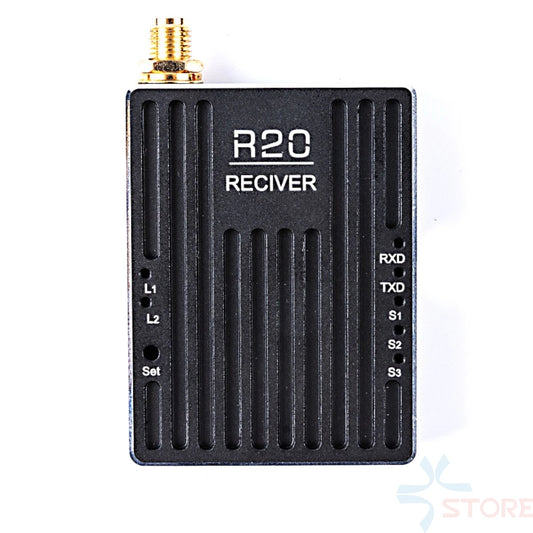
R20 820-845Mhz 100mw-1W VTX - Over 30Km adjustable wireless data link Digital Video Downlink System
Regular price From $304.93 USDRegular priceUnit price per$365.91 USDSale price From $304.93 USDSale -
2.4G 1W 12CH VTX /VRX - Partom 2.4G 1000MW CCTV Wireless Video Transmitter and Receiver Kit UAV Drone Transceiver
Regular price From $63.60 USDRegular priceUnit price per$82.68 USDSale price From $63.60 USDSale -
Matek VTX-1G3SE / VRX-1G3-V2 1.2G 1.3G 800mw 9CH VRX - Matek System Video Transmission Receiver For RC FPV Drone Aircraft Helicopter Model Parts
Regular price From $24.98 USDRegular priceUnit price per$34.97 USDSale price From $24.98 USDSale -
1.2G Hz 2W 8CH VTX / 12CH VRX - 2000mW FPV 1K 5km Distance Wireless Audio Video CCTV Transmitter Receiver Partom
Regular price From $55.00 USDRegular priceUnit price per$85.46 USDSale price From $55.00 USDSale -
RCMOY 5.8G 3W 48CH VTX - Video Transmitter 25mW/1000mW/2000mW/3000mW adjustable For Long Rang FPV Racing Drone rc toy part
Regular price $85.21 USDRegular priceUnit price per$110.77 USDSale price $85.21 USDSale -
EWRF 5.8Ghz 2W 48CH VTX - FPV Wireless Transmitter 2000MW Video AV Audio Sender With 2.8mm CMOS 1000TVL Camera for Long Range RC Drone
Regular price $47.09 USDRegular priceUnit price per$61.22 USDSale price $47.09 USDSale -
RXCRC 5.8G 48CH 1.6w VTX - Long Range Transmitter+CMOS 1000TVL FPV Camera+4.3 Inch Monitor Built-in Battery With a Light Shield
Regular price $105.79 USDRegular priceUnit price per$137.53 USDSale price $105.79 USDSale -
Taiwan 1.2GHZ 1.3GHZ 7000MW 7W Wireless Video Audio Transmitter Receiver,Long Range FPV CCTV transmitter
Regular price From $336.75 USDRegular priceUnit price per$404.10 USDSale price From $336.75 USDSale -
1.2G 5W VTX - Miniature FPV Video Sender 1200Mhz 5000mW Audio Video Wireless Transmitter and Receiver LOS Long Distance
Regular price From $45.00 USDRegular priceUnit price per$122.60 USDSale price From $45.00 USDSale -
5.8Ghz 48CH 2W VTX - Long Range FPV Wireless Viedo Transmitter and EWRF UVC OTG Receiver + CMOS 1200TVL 2.5mm FPV Camera
Regular price $78.40 USDRegular priceUnit price per$101.92 USDSale price $78.40 USDSale -
1.2G 8W 6CH VTX / 12CH VRX - Wireless Analog Transmitter Receiver Audio Video Transmission System for RC Models Drone/ Quadcopter
Regular price $159.00 USDRegular priceUnit price per$195.12 USDSale price $159.00 USDSale -
5.8G 3W 48CH VTX - Video Transmitter 25mW/1W/2W/3000mW For Long Rang FPV Racing Drone Rush MAX SOLO 2.5W Upgrade
Regular price $98.15 USDRegular priceUnit price per$127.59 USDSale price $98.15 USDSale -
UltraFPV VTX2W5 5.8GHZ 2.5W VTX - 0MW/25/400/800/1.5W/2.5W Transmitter VTX for RC Models Long Range FPV Racing Drone Frame
Regular price $62.46 USDRegular priceUnit price per$81.20 USDSale price $62.46 USDSale -
RXCRC 5.8G FPV 48CH 25mW Transmitter VTX-CAM with 1000TVL 180 degree AIO Camera for RC indoor FPV Racing Drone Parts
Regular price $39.57 USDRegular priceUnit price per$51.43 USDSale price $39.57 USDSale -
Feiyu Tech FY-605 - 15 km Long distance Data Radio Data link transmission solution for UAV Remote Control
Regular price $831.37 USDRegular priceUnit price per$997.64 USDSale price $831.37 USDSale -
Cyclone XF5804 PRO VTX - 5.8G 48CH 25/200 / 600mW Switchable FPV Video Transmitter OSD adjustable MMCX VTX
Regular price $22.65 USDRegular priceUnit price per$31.71 USDSale price $22.65 USDSale -
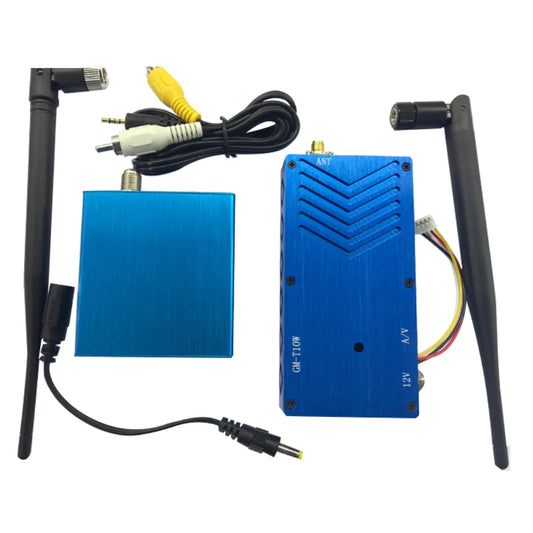
1.3G 10W 4CH VTX - Wireless AV FPV Transmitter Receiver Combo for Long Rang RC Drone / Quadcopter
Regular price $167.38 USDRegular priceUnit price per$200.86 USDSale price $167.38 USDSale -
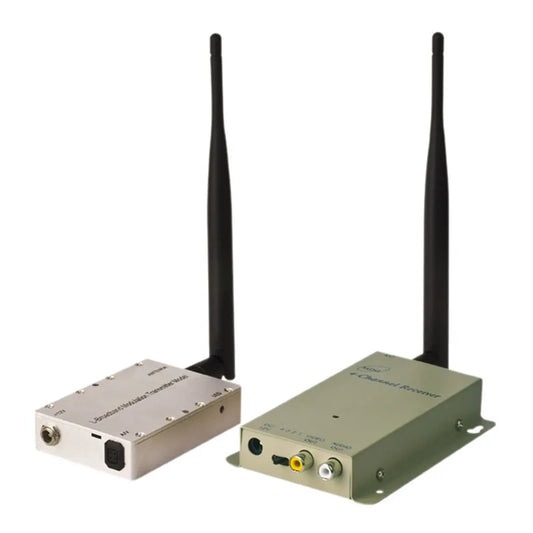
1.2G 4W 4000mW VTX - PAL/NTSC Wireless AV FPV Transmitter Receiver Combo 2-3KM for RC FPV Drone
Regular price $250.06 USDRegular priceUnit price per$300.07 USDSale price $250.06 USDSale -
HolyBro Atlatl HV V2 1.2GHz 1W VTX - 2-8S LiPo 30.5X30.5mm Video Transmitter for FPV Long Range Drone DIY Parts
Regular price $59.64 USDRegular priceUnit price per$77.53 USDSale price $59.64 USDSale -
RXCRC EWRF 5.8G 2W 48CH VTX - 200mW/500mW/1000mW/2000mW RP-SMA Female Pitmode FPV Video Transmitter Built-in Mic for Long Range RC Drone
Regular price $49.10 USDRegular priceUnit price per$63.83 USDSale price $49.10 USDSale -
RUSHFPV RUSH TANK SOLO 1.6W 5.8G VTX - 5.8GHZ 48CH PitMode Pitmode 25mW 400mW 800mW 1600mW Adjustable 2-6S Microphone for FPV Long Range Drone
Regular price $69.27 USDRegular priceUnit price per$90.05 USDSale price $69.27 USDSale -
RUSH TANK Ultimate MINI VTX - 5.8GHz 48CH RaceBand 0/25/200/500/800mW Switchable 20x20 Stackable FPV Transmitter For RC Drone
Regular price $43.67 USDRegular priceUnit price per$56.77 USDSale price $43.67 USDSale -
RUSH TANK RACE II VTX - 48CH PIT/25/50/200mW/MAX 5.8GHz Video Transmitter w/ Smart Audio 20x15mm 1.7g Stackable For FPV Racing Drone Micro Stacks
Regular price $28.91 USDRegular priceUnit price per$37.59 USDSale price $28.91 USDSale -
Rushfpv RUSH Tiny TANK Nano VTX - 48CH 350mW TBS SmartAudio FPV Video Transmitter 5V Input for RC Drone FPV Racing Toothpick
Regular price $29.95 USDRegular priceUnit price per$38.93 USDSale price $29.95 USDSale -
RUSH TANK Ultimate PLUS VTX - 5.8GHz 48CH 2-8s 800mW Video Transmitter w/ Smart Audio AGC MIC FPV Racing Drone
Regular price $45.01 USDRegular priceUnit price per$58.51 USDSale price $45.01 USDSale -
RushFPV 1.6W 1.3G VTX - 1.3GHZ 9CH 1600mW FPV Analog Video Transmitter Module
Regular price From $12.82 USDRegular priceUnit price per$19.23 USDSale price From $12.82 USDSale -
RUSHFPV TANK II ULTIMATE VTX - 7-36V 48CH 37CH PIT/25/200/500/800mW Video Transmitter
Regular price $48.68 USDRegular priceUnit price per$63.29 USDSale price $48.68 USDSale
